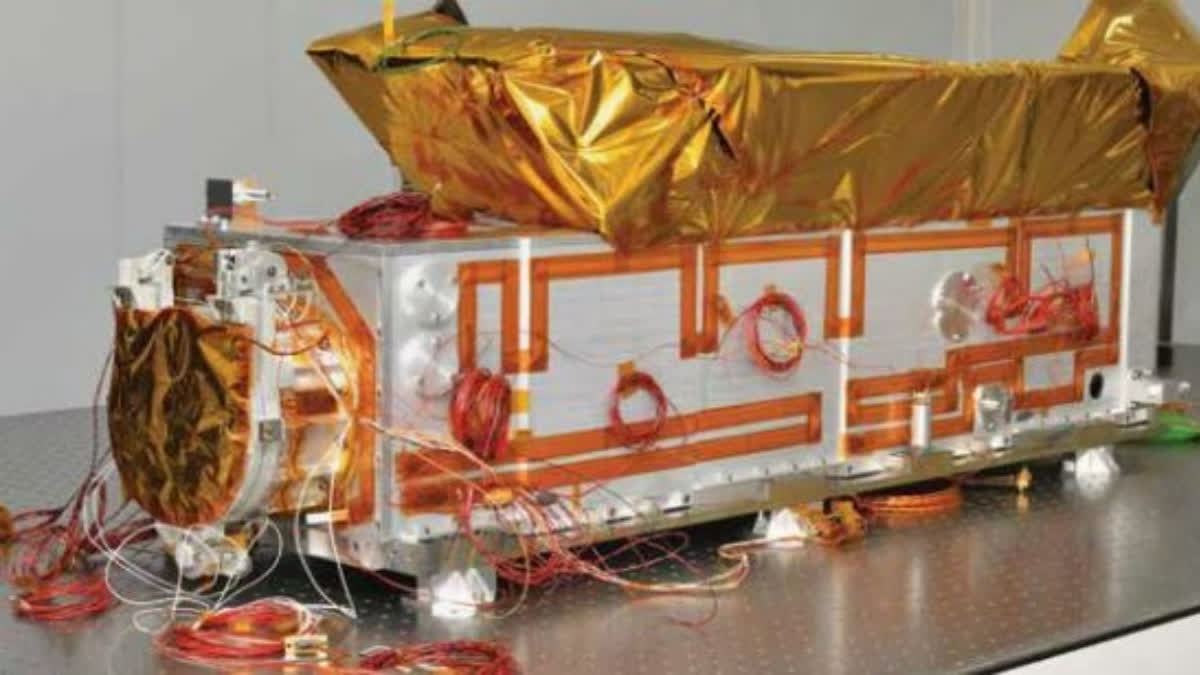Bengaluru: In a significant stride towards unraveling the mysteries of our solar system's central star, the Indian Space Research Organization (ISRO) is gearing up to launch its first dedicated space-based solar mission, Aditya-L1.
This ambitious mission will carry a payload composed of seven instruments, namely, the Visible Emission Line Coronagraph (VELC), the Solar Ultraviolet Imaging Telescope (SUIT), the High Energy L1 Orbiting Spectrometer (HEL1OS), the Soft X-ray Low Energy X-ray Spectrometer (SoLEX), the Plasma Analyzer Package for Aditya (PAPA), Aditya Solarwind and Particle Experiment (ASPEX) and a Magnetometer.
What is the SUIT? The Solar Ultraviolet Imaging Telescope (SUIT), is an instrument onboard the Aditya-L1 spacecraft, the first dedicated solar mission of the Indian Space Research Organization (ISRO), which will be put in a halo orbit at the Sun-Earth Langrage point (L1).
What will SUIT do? Operating within an off-axis Ritchey–Chrétien configuration, the SUIT will utilise a fusion of 11 narrow and broad bandpass filters to capture comprehensive full-disk solar imagery within the ultraviolet (UV) wavelength range of 200-400 nm. This technology will enable near-simultaneous observations of two crucial layers of the sun's atmosphere: the Photosphere and Chromosphere.
Also read- Chandrayaan-3 update: Lander records "event", studies Lunar plasma
The wealth of data collected by the SUIT is poised to revolutionise our comprehension of solar atmospheric dynamics. By shedding light on the intricate coupling and energy transfer mechanisms operating within the Photosphere and Chromosphere, scientists aim to decipher the processes underlying phenomena like solar prominences and Coronal Mass Ejections (CMEs). These phenomena, which hold significant space weather implications, have a direct impact on Earth's environment and technological systems.
-
Explained: Aditya-L1 mission, India's first space-based observatory to study the Sun #AdityaL1mission #AdityaL1 #ISRO #ISROMissions https://t.co/xcJCLxCiY7
— ETV Bharat (@ETVBharatEng) August 30, 2023 " class="align-text-top noRightClick twitterSection" data="
">Explained: Aditya-L1 mission, India's first space-based observatory to study the Sun #AdityaL1mission #AdityaL1 #ISRO #ISROMissions https://t.co/xcJCLxCiY7
— ETV Bharat (@ETVBharatEng) August 30, 2023Explained: Aditya-L1 mission, India's first space-based observatory to study the Sun #AdityaL1mission #AdityaL1 #ISRO #ISROMissions https://t.co/xcJCLxCiY7
— ETV Bharat (@ETVBharatEng) August 30, 2023
These observations will help to improve our understanding of coupling and dynamics of various layers of the solar atmosphere, mechanisms responsible for stability, dynamics and eruption of solar prominences and Coronal Mass ejections, and possible causes of solar irradiance variability in the 'Near' and 'Middle' UV regions, which is of central interest for assessing the Sun’s influence on climate.
Also read- Aditya-L1: India's solar mission launch countdown starts today, says ISRO
Core questions which SUIT will attempt to answer-
- Coupling and Energetics: How does energy propagate from the Photosphere to the Chromosphere and beyond?
- Dynamics of the Solar Atmosphere: What triggers dynamic events like spicules and chromospheric jets?
- Prominence Studies: What triggers the stability, dynamics, and eruptions of solar prominences?
- CMEs and Space Weather: What are the initial kinematics of erupting prominences?
- Sun-Climate Connection: How does solar UV irradiance variability impact Earth's climate?
Features of SUIT- A notable feature of the SUIT lies in its ability to capture images within the 2000 to 4000A wavelength range, which has hitherto remained unexplored. This range is pivotal for monitoring the ozone and oxygen content crucial to Earth's atmosphere. The instrument's capacity to measure UV radiation will contribute to our understanding of its potential impact on skin cancer risks, according to the ISRO scientists.
As Aditya-L1 embarks on its mission, it is poised to provide a comprehensive measurement of solar radiation across a spectrum spanning from hard X-rays to infrared. Furthermore, it will deliver in-situ measurements of particles within the solar wind, offering a deeper comprehension of the Sun's magnetic field dynamics at the L1 point.
Also read- Explained: All about Aditya-L1's VELC payload studying solar corona



